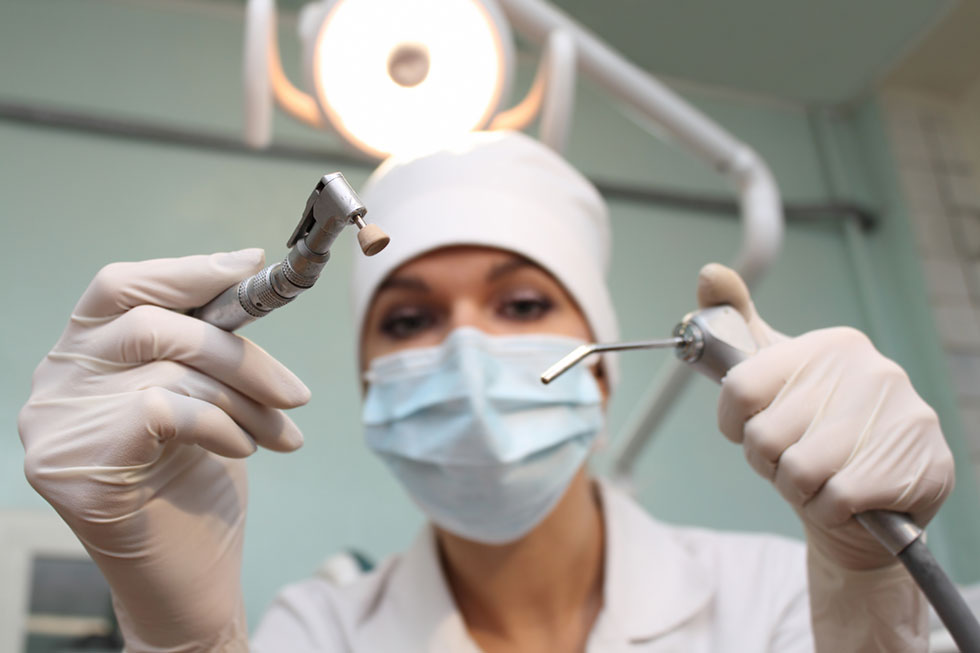Preparation for the implantation
Our clinic is equipped with a separate surgery for dentoalveolar operations. In this special operation room we perform dentoalveolar (oral) surgery, which is the surgical management of teeth and surrounding tissues. It is equipped with all the state-of -the-art surgical equipment, like implantology motor, digital X-ray capable to provide immediate X-ray pictures during operations, intra-oral camera, equipment for conscious sedation and total anaesthesia, including an adjacent premedication and emergency room.
What treatments are performed by an oral surgeon?
A most of the tooth extractions and almost all wisdom tooth extraction are performed by oral surgeons. When it comes to tooth extraction, the technique should be chosen according to the situation, health, proceeding treatment of the teeth.
The most common surgery is the extraction of a trapped (impacted) wisdom tooth. Wisdom teeth may harm the adjacent teeth and can cause infections. The method of the their removal depends on the condition of the teeth: whether or not they have already erupted through the gum, whether or not the main nerves in the jawbone are interlocked by the roots of the wisdom teeth., etc. . X-ray or sometimes CT scan precedes wisdom tooth extraction if it is needed. Wisdom teeth often have to be sectioned while being extracted thus the jawbone might be injured.
The extraction of teeth roots, the removal of the inflammatory nodule and vesicle formed on the apex of the root, the surgical removal of teeth roots (resectio), the removal and treatment of vesicles formed in the oral cavity or maxilla, the treatment of the trauma, certain types of gum surgery, implantology and complementary bone grafting etc. are all included in oral surgery.
What is bone grafting/substitution?
During the implantation the artificial root has to be supported properly by the surrounding bone. However, it is quite common that after the loss of teeth the bone becomes atrophic and loses substance. In such cases artificial bone substitute material is installed to the location of the implant or the future place of the implant. This material is gradually turns into real bone tissue. Depending on the bone quality and the amount of the loss, bone enhancement is performed prior to the implantation or at the same time.
What is the sinus lift technique?
Sinus lift is a surgical procedure performed by an appropriately trained dentist or dental surgeon to increase the amount of bone in the posterior maxilla or upper jaw bone.
In case of implantation and bone grafting in the upper jaw then the sinus around this area should be considered. The loss of teeth has the consequence of bone deterioration, loss of surrounding tissues, so the jaw becomes very thin. The atrophy of the bones is noticeable both in the oral cavity and the facial sinus. In case of bone grafting the bone substitute material has to be inserted between the upper jawbone and the inside membrane of the sinus in order to root the implant in the bone tissue. The membrane of the sinus has to be lifted in order to insert the bone graft under it. This process is called sinus lift technique. The sinus lift can be either closed (simple) or open (more difficult). In case of closed sinus lift the bone graft substitute material is injected under the membrane of the sinus through the pilot drilling of the implants. In open sinus lift technique a little flap is cut from the side of the oral cavity and the bone graft is inserted through this hole. The hole is then closed by membrane. In case of serious bone atrophy the ossification takes 6-9 months and implants can be inserted only after this healing period.



